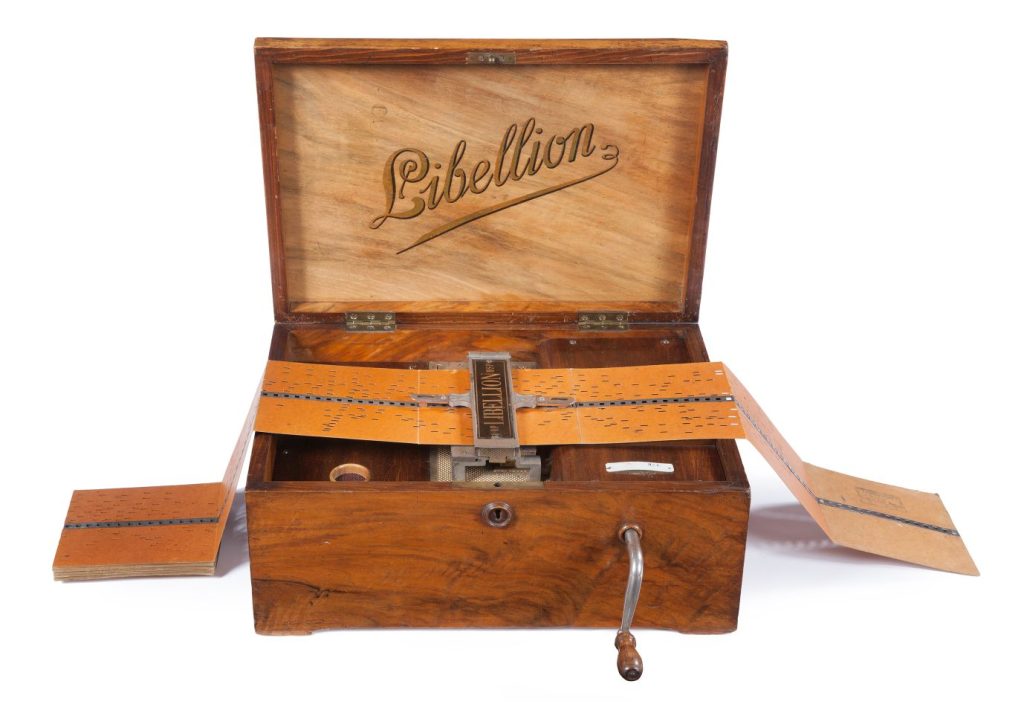Musical boxes
A musical box is a musical instrument whose sound source is a series of tuned metal teeth: the musical toothed comb. With the advent of the music box, a stand-alone musical instrument was introduced into many living rooms.
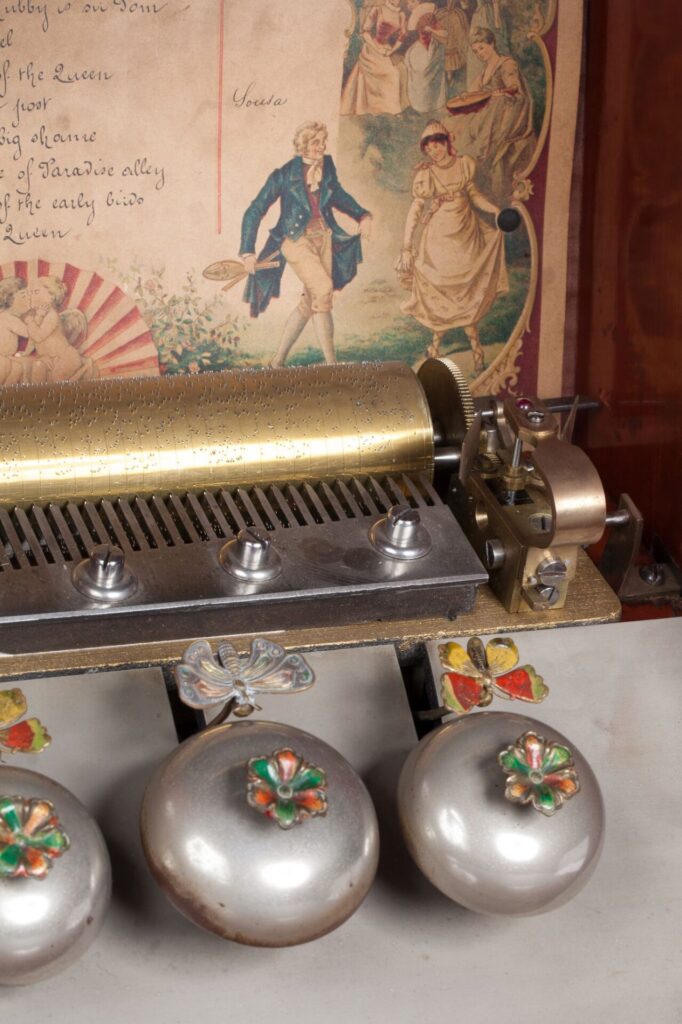
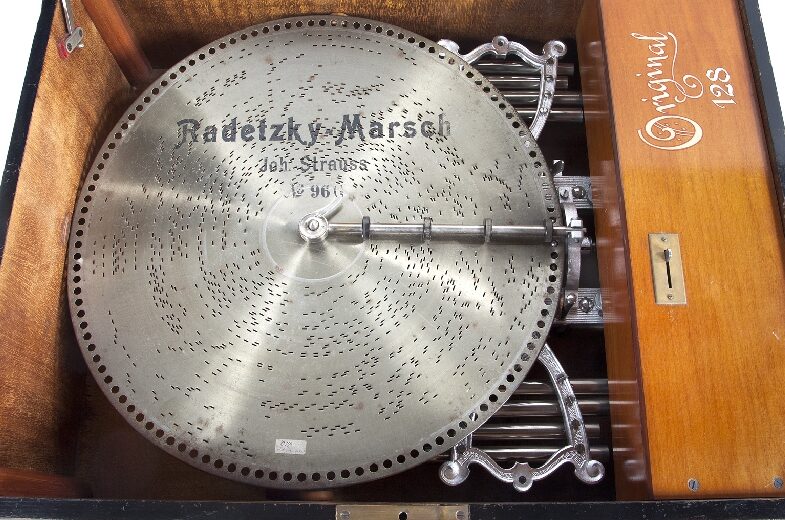
The history of the musical box starts in 1796 when Antoine Favre of Geneva had his invention of the so-called ‘carillon without hammers and bells’ registered. The musical box became a huge success! This was mainly due to the huge combination of musical possibilities, its compactness and relatively low production costs. It now became possible for the middle classes to have music in their homes too.
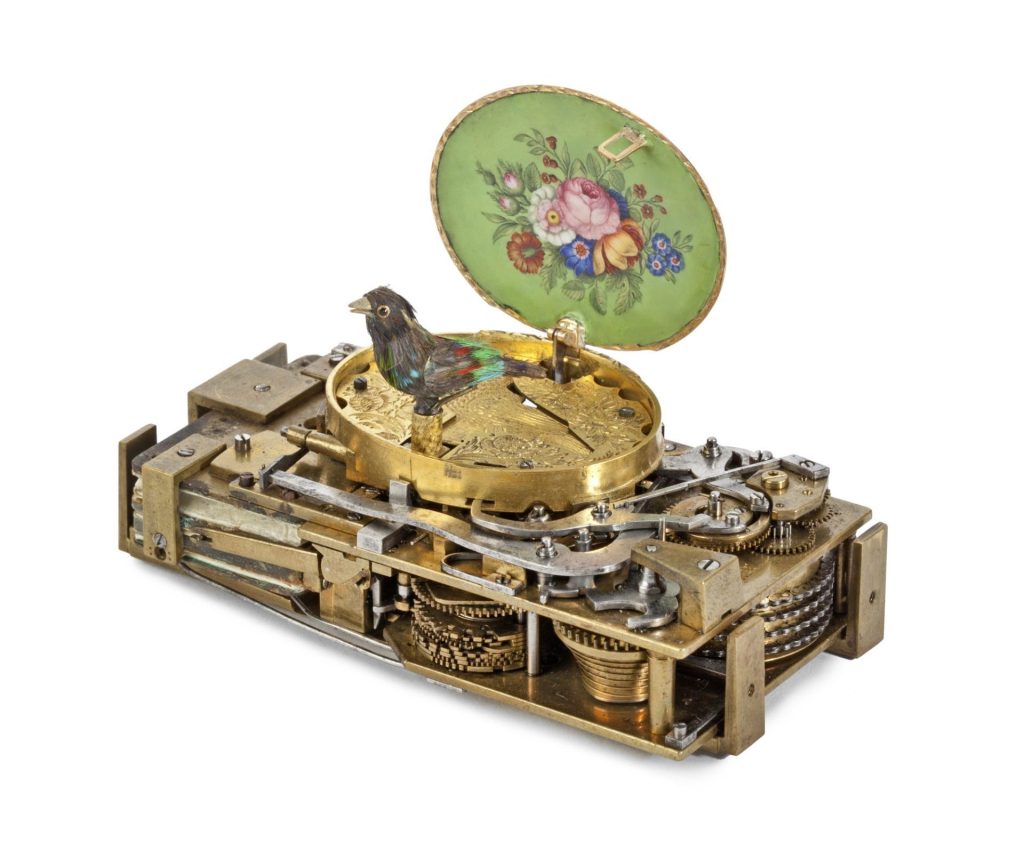
Music box with cylinder
The earliest musical toothed combs were played by a cylinder with the pins on it plucking the teeth directly, without the intervention of hammers as is the case with musical clocks with bells. Initially, cylinder mechanisms were mounted in objects such as clocks, watches, snuffboxes and sewing boxes. From about 1815, the cylinder musical box became more and more of a musical instrument in its own right. The origins of the musical box can be found in the Swiss Jura. There was a long tradition of clockmaking here which is closely related to the production of musical boxes. Geneva was an important centre for watchmaking and it is in watches and other small household objects where we find the first musical toothed combs. These early musical boxes were often taken home as souvenirs of Switzerland by the European bourgeoisie.
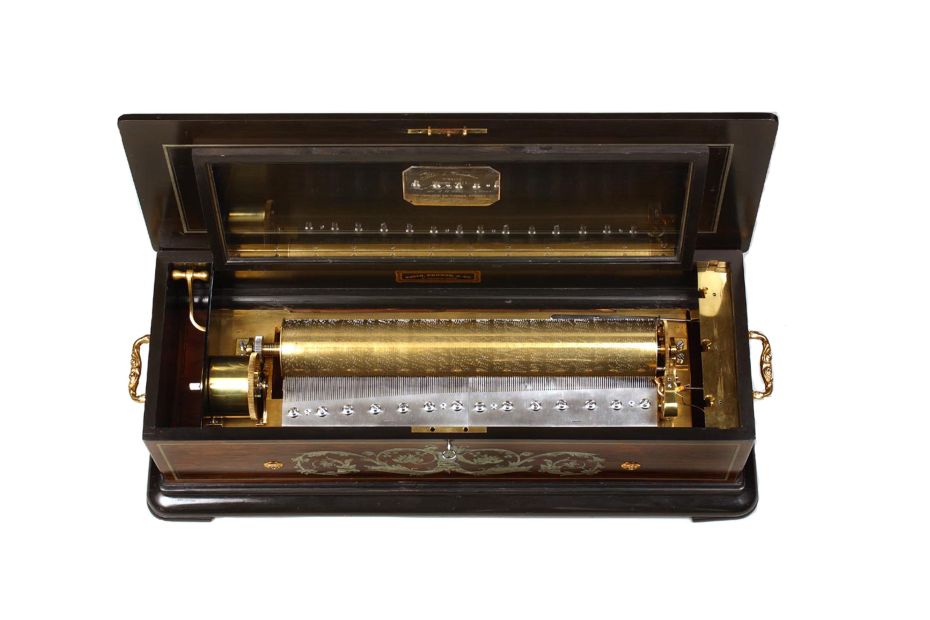
In its collection, Museum Speelklok has cylinder musical boxes by various makers from countries such as Switzerland, Austria, the Czech Republic and Japan. There was growing competition among Swiss musical box makers as everyone wanted to be – and keep being – innovative. This led to a lot of new gadgets and greater musical sophistication and spectacle. For instance, Museum Speelklok has a so-called ‘Variations Box’ by Nicole Frères which plays a range of variations on a melody.
Music box with disc
From the end of the 19th century, it became possible for the musical toothed comb to be played by a disc made of tin. The disc musical box was born! Discs were a lot cheaper and easier to replace than cylinders which made it possible to play a much larger musical repertoire than before. Disc musical boxes were made in all different sizes, ranging from small ones for the living room to large ones for public places. One example of a large disc musical box is the Polyphon model 5 disc-changer: with this ‘jukebox’, you could put a coin in it and choose from as many as ten different discs. The success of the disc musical box came to an end around 1910 with the rise of the gramophone and the radio.
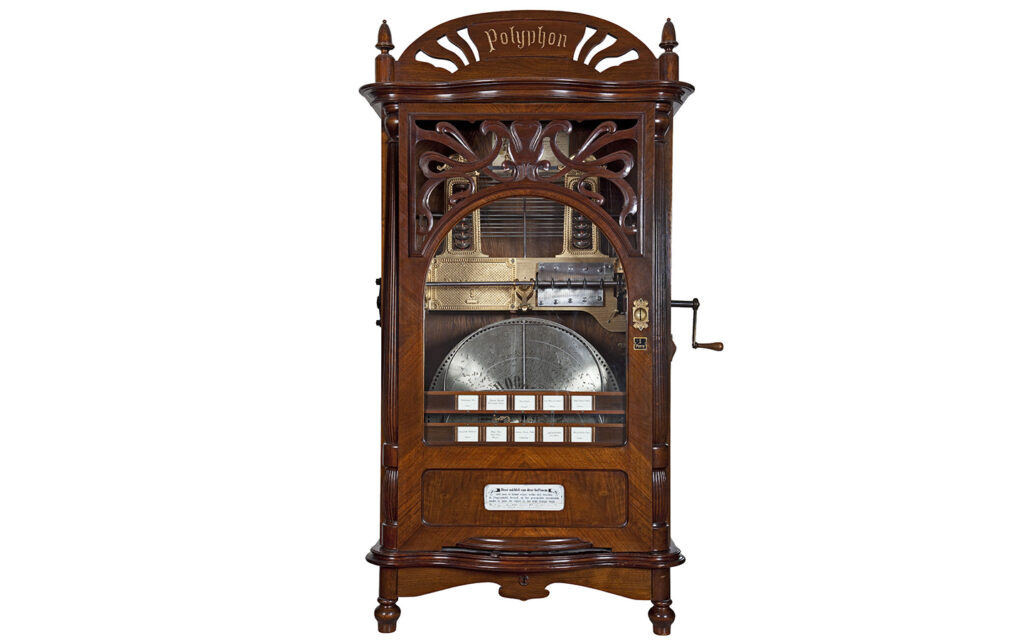
Music box with book
Much rarer than the music box with cylinder and the music box with disc is the music box with book. With this type, the music is programmed on a cardboard book of zigzag-folded strips. The advantages of the book system are the unlimited length of the music programme, cheap material and the ease with which they can be produced. Unfortunately, the book musical box also has a drawback: it is very fragile. Museum Speelklok has several book musical boxes, one of which is a floor-standing example with a clock: the Libellion from circa 1900.
